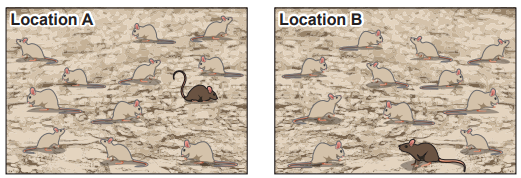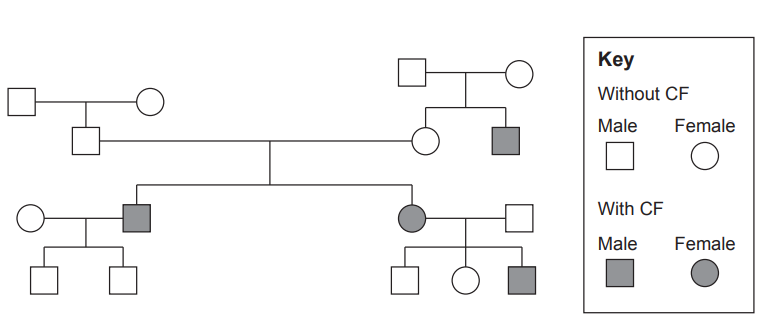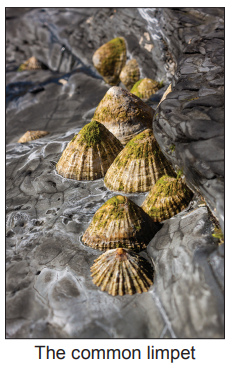The rock pocket mouse lives in a sandy desert in the United States. The mouse may be either light or dark in colour. A volcano erupted 1.7 million years ago and turned large parts of the desert into dark coloured rock. Image 5.1 shows how two locations (A and B) in the desert could have looked before the volcano erupted.
Image 5.1

Image 5.2 shows how the mouse population might have changed over time after the volcano erupted.
Image 5.2

Circle the cause of the changed rock colour in location B from the list below.
flooding volcanic eruptions human activities forest fires
Tables 5.3 and 5.4 show the number of light and dark coloured mice over time.
Table 5.3 – Location A
Number of mice in Location A | |||
Time period (million years ago) | light coloured | dark coloured | Total |
1.7 | 11 | 1 | 12 |
1.6 | 11 | 1 | 12 |
1.5 | 11 | 1 | 12 |
Table 5.4 – Location B
Number of mice in Location B | |||
Time period (million years ago) | light coloured | dark coloured | Total |
1.7 | 9 | 3 | ..... |
1.6 | ...... | 6 | 12 |
1.5 | 2 | ...... | 12 |
(i) Use Image 5.2 to complete Table 5.4.
[2]
(ii) Use the information in Table 5.4 to complete Graph 5.6 for Location B by
I. adding the axes labels;
[1]
II. adding a scale to both axes;
[1]
III. drawing bars for each of the results.
[2]
Location A has been done for you on Graph 5.5.

(iii) State what happened over time to the number of light coloured mice at
I. location A; ...........................
[1]
II. location B. ..............................
[1]
(i) A mutation caused the dark-coloured mice to appear in a population of light coloured mice.
Define the term mutation.
[1]
(ii) Suggest and explain why the dark coloured mice had an advantage in Location B.
[2]
(iii) Suggest what will happen to the number of light coloured mice in Location B in the future.
[1]
(iv) The change in colour over time is an example of natural selection or survival of the fittest. Tick (✓) the boxes next to the two scientists who developed the theory of natural selection.
[2]

Did this page help you?




